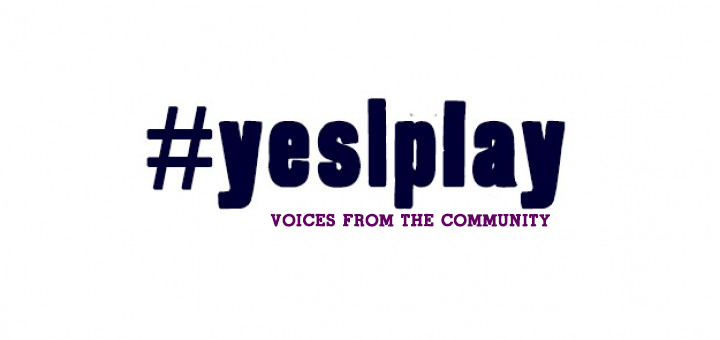So, I have some things to say about “resting bitch face.”
For those of you who may have been living under a rock up until reading this post, “resting bitch face,” as Jessica Bennett explains in a recent New York Times piece, “I’m Not Mad. That’s Just My RBF.,” is a term that has come to be used in reference to “a face that, when at ease, is perceived as angry, irritated or simply … expressionless. It’s the kind a person may make when thinking hard about something — or perhaps when they’re not thinking at all.” And by “a person,” here, Bennett really means a woman, because, as she puts it, “men do not experience RBF, at least not by name” since men’s serious, stern expressions are viewed as being the default, while women, on the other hand, seem often to be expected to smile.
 This is true for celebrities like Kristen Stewart and January Jones, both of whom seem to be consistently accused of looking “absolutely miserable,” and, recently, this is true for Serena Williams, who had to field questions from a reporter who just couldn’t wrap his mind around the fact that she wasn’t smiling after a long day at the U.S. Open quarterfinals. It’s also true for women in the workplace, as Rene Paulson discusses in “Women with ‘Resting Bitch Face’ Are Actually Better Communicators.” Paulson argues that, while the “majority of coverage has so far focused on the disadvantages of RBF,” she thinks there are benefits to having it as well:
This is true for celebrities like Kristen Stewart and January Jones, both of whom seem to be consistently accused of looking “absolutely miserable,” and, recently, this is true for Serena Williams, who had to field questions from a reporter who just couldn’t wrap his mind around the fact that she wasn’t smiling after a long day at the U.S. Open quarterfinals. It’s also true for women in the workplace, as Rene Paulson discusses in “Women with ‘Resting Bitch Face’ Are Actually Better Communicators.” Paulson argues that, while the “majority of coverage has so far focused on the disadvantages of RBF,” she thinks there are benefits to having it as well:
Women confronted by a world that automatically attaches negative attributes to their non-smiling face must quickly learn how to communicate and also hone a finely-tuned awareness of both our own emotions and the emotions of those around us.
We must also quickly develop a strong sense of self-awareness. This self-awareness allows you to adapt quickly in volatile or unfamiliar situations—an invaluable trait when presenting before a room full or strangers or superiors, for example.
And then there’s the empathy factor. Women used to being constantly misunderstood focus more on the words someone says, rather than their tone, body cues, or facial expressions, ensuring a more effective flow of information between both parties.
Okay, so, I have a couple of thoughts on all this. First of all, the basis of the argument that women with RBF are better communicators seems to work off an essentializing conflation of women’s bodies with the stereotypes of women as intuitive, empathetic, emotional. But more than that, this argument also seems to imply that, for women to be these hypothetical better communicators as a result of some sort of heightened “self-awareness,” as a result of an awareness of the manner in which their bodies and faces and expressions are perceived by others, they also, then, would need to engage in a level of self-surveillance and self-policing—they would need to manipulate their own bodies in ways that might ensure, to reiterate Paulson’s phrasing, “a more effective flow of information between both parties.”
 Of course, it’s not just women who police their own bodies in an effort to conform to the hegemonic, patriarchal standards of normative gender roles. It’s men—men policing the bodies of women, men like the reporter informing Serena Williams that she should be smiling after her win. And it’s the system in which we are situated; it’s the social structure surrounding these various interactions. But, often, articles like those by Paulson and Bennett are framed in a way that implies that it’s not up to these systemic structures to change, but, rather, that it’s up to women to work to exist within these structures. Indeed, Paulson concludes her argument by saying, “I guess what I’m saying is: learn to embrace your perennially unhappy faces, ladies; they may end up being one of your greatest assets.” While this conclusion, at least, isn’t as overtly troubling as an approach that might argue for women to smile more in an effort to conform to the standards of normative gendered embodiment, it nonetheless perpetuates the neoliberal assumption that the system can’t be changed, that it’s up to the individual (the ladies) to “lean in” and pull herself up by her bootstraps in order to succeed within this system—that, even though, as Paulson does admit, women shouldn’t have to smile for others or be ashamed of their apparently bitchy faces, there’s really nothing we can do about that (oh well!), so women should just “embrace” their (sad, angry, bitchy, flawed) faces and learn to use it to their advantage.
Of course, it’s not just women who police their own bodies in an effort to conform to the hegemonic, patriarchal standards of normative gender roles. It’s men—men policing the bodies of women, men like the reporter informing Serena Williams that she should be smiling after her win. And it’s the system in which we are situated; it’s the social structure surrounding these various interactions. But, often, articles like those by Paulson and Bennett are framed in a way that implies that it’s not up to these systemic structures to change, but, rather, that it’s up to women to work to exist within these structures. Indeed, Paulson concludes her argument by saying, “I guess what I’m saying is: learn to embrace your perennially unhappy faces, ladies; they may end up being one of your greatest assets.” While this conclusion, at least, isn’t as overtly troubling as an approach that might argue for women to smile more in an effort to conform to the standards of normative gendered embodiment, it nonetheless perpetuates the neoliberal assumption that the system can’t be changed, that it’s up to the individual (the ladies) to “lean in” and pull herself up by her bootstraps in order to succeed within this system—that, even though, as Paulson does admit, women shouldn’t have to smile for others or be ashamed of their apparently bitchy faces, there’s really nothing we can do about that (oh well!), so women should just “embrace” their (sad, angry, bitchy, flawed) faces and learn to use it to their advantage.
 And it seems important to also note that it’s not just men policing women’s unsmiling faces to their faces (or women policing their own), but our technologies being used to do so as well, for, as Adobe demonstrated on an iPad Pro at an Apple event earlier this month, the apparent power of a new app called Adobe Fix lies in its ability to turn a woman’s neutral expression into a smile. Or, as Eric Snowden said as he demoed the app,
And it seems important to also note that it’s not just men policing women’s unsmiling faces to their faces (or women policing their own), but our technologies being used to do so as well, for, as Adobe demonstrated on an iPad Pro at an Apple event earlier this month, the apparent power of a new app called Adobe Fix lies in its ability to turn a woman’s neutral expression into a smile. Or, as Eric Snowden said as he demoed the app,
I’m not quite happy with the model’s smile…I wish she had just a little bit more of a smile. I think it’d warm up the design quite a bit.
What Snowden’s words reveal is the fact that our technologies are socially constructed and, as such, their usages often reify the social structures surrounding them—which, in this case, occurs through the problematic use of an app to technologically force a woman to smile.
So why does all this matter? And what does all this have to do with games?
As it probably goes without saying (and as I’ve probably already said before), games don’t exist in a vacuum. They are embedded in these same structures and dynamics that cause reporters to police female athlete’s expressions and that result in apps that “fix” women’s faces. And this embeddedness, as we see time and time again, results in similarly problematic engagements with women’s bodies. And that’s what seems to be the connective thread—the manner in which women’s embodiment is policed and represented, whether it’s through the prevalence of characters like Quiet or even the terminology of a phrase like “resting bitch face” (a phrasing that is problematic in and of itself). Our narratives, our technologies, our genders are all constructed, and it is this constructedness that needs to be troubled through critical interrogation.




